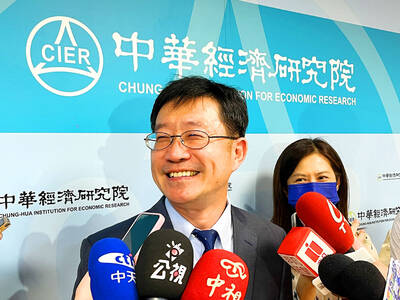CSBC Corp, Taiwan (台灣國際造船) yesterday said it has signed a deal to supply steel tubular structures for the construction of 20 of Sing Da Marine Structure Corp’s (興達海洋基礎) transition pieces used in jacket foundations for offshore wind developer Orsted Taiwan Ltd’s (沃旭能源) project off the coast of Changhua County.
Transition pieces, which are situated between the submarine jacket foundation and the wind turbine tower section, are essential elements in holding together wind turbines.
It is not the first time that CSBC has worked with Sing Da, a wholly owned subsidiary of China Steel Corp (CSC, 中鋼). CSBC and CSC are under the supervision of the Ministry of Economic Affairs.
The two companies last year collaborated in the construction of steel tubular structures for two transition pieces to be used in the first phase of Orsted’s offshore 1 and 2a wind farms in Changhua.
CSBC said that it is the nation’s first supplier of steel structures for transition pieces, with the first batch scheduled to be shipped next month,
Seeking to firmly establish itself as a local supplier for Taiwan’s offshore wind energy industry, CSBC said that it has invested in equipment and set up a wharf to facilitate shipments of the heavy construction materials used in wind farms.
The company has also expanded its production capacity for steel structures, with a second plant expected to be completed by July, it said, adding that it is providing training for in-house welders.
CSBC’s expanded production capacity would mean that 24 transition pieces could be completed per year, while shipments for the second batch of steel structures are scheduled for May next year, the Central News Agency reported.
With two 5,000 horsepower tugboats and three barges, CSBC aims to become a one-stop service for the production, shipment and installation of steel structures for the offshore wind industry, the company said.

WEAKER ACTIVITY: The sharpest deterioration was seen in the electronics and optical components sector, with the production index falling 13.2 points to 44.5 Taiwan’s manufacturing sector last month contracted for a second consecutive month, with the purchasing managers’ index (PMI) slipping to 48, reflecting ongoing caution over trade uncertainties, the Chung-Hua Institution for Economic Research (CIER, 中華經濟研究院) said yesterday. The decline reflects growing caution among companies amid uncertainty surrounding US tariffs, semiconductor duties and automotive import levies, and it is also likely linked to fading front-loading activity, CIER president Lien Hsien-ming (連賢明) said. “Some clients have started shifting orders to Southeast Asian countries where tariff regimes are already clear,” Lien told a news conference. Firms across the supply chain are also lowering stock levels to mitigate

IN THE AIR: While most companies said they were committed to North American operations, some added that production and costs would depend on the outcome of a US trade probe Leading local contract electronics makers Wistron Corp (緯創), Quanta Computer Inc (廣達), Inventec Corp (英業達) and Compal Electronics Inc (仁寶) are to maintain their North American expansion plans, despite Washington’s 20 percent tariff on Taiwanese goods. Wistron said it has long maintained a presence in the US, while distributing production across Taiwan, North America, Southeast Asia and Europe. The company is in talks with customers to align capacity with their site preferences, a company official told the Taipei Times by telephone on Friday. The company is still in talks with clients over who would bear the tariff costs, with the outcome pending further

Six Taiwanese companies, including contract chipmaker Taiwan Semiconductor Manufacturing Co (TSMC, 台積電), made the 2025 Fortune Global 500 list of the world’s largest firms by revenue. In a report published by New York-based Fortune magazine on Tuesday, Hon Hai Precision Industry Co (鴻海精密), also known as Foxconn Technology Group (富士康科技集團), ranked highest among Taiwanese firms, placing 28th with revenue of US$213.69 billion. Up 60 spots from last year, TSMC rose to No. 126 with US$90.16 billion in revenue, followed by Quanta Computer Inc (廣達) at 348th, Pegatron Corp (和碩) at 461st, CPC Corp, Taiwan (台灣中油) at 494th and Wistron Corp (緯創) at

NEGOTIATIONS: Semiconductors play an outsized role in Taiwan’s industrial and economic development and are a major driver of the Taiwan-US trade imbalance With US President Donald Trump threatening to impose tariffs on semiconductors, Taiwan is expected to face a significant challenge, as information and communications technology (ICT) products account for more than 70 percent of its exports to the US, Chung-Hua Institution for Economic Research (CIER, 中華經濟研究院) president Lien Hsien-ming (連賢明) said on Friday. Compared with other countries, semiconductors play a disproportionately large role in Taiwan’s industrial and economic development, Lien said. As the sixth-largest contributor to the US trade deficit, Taiwan recorded a US$73.9 billion trade surplus with the US last year — up from US$47.8 billion in 2023 — driven by strong